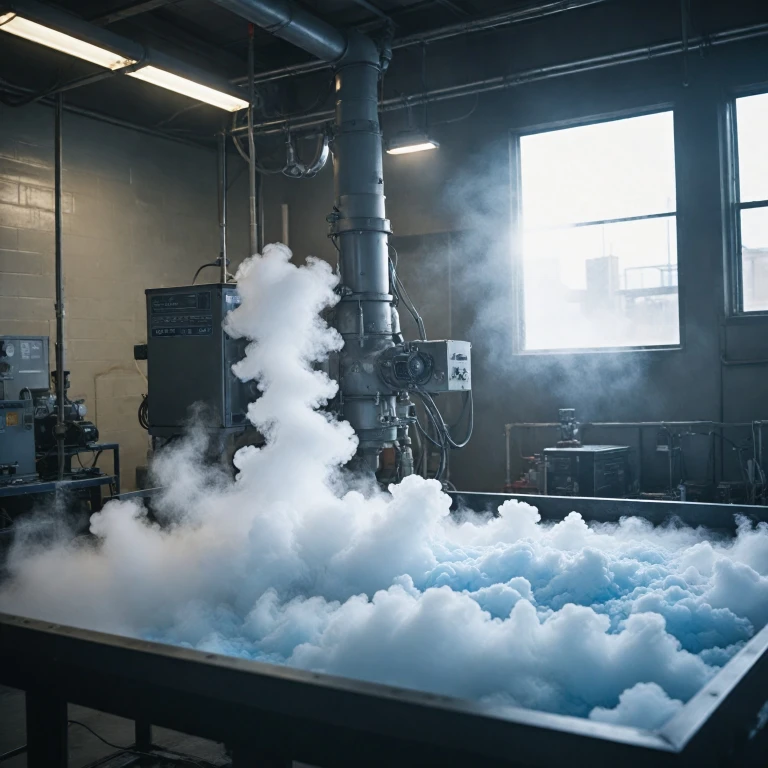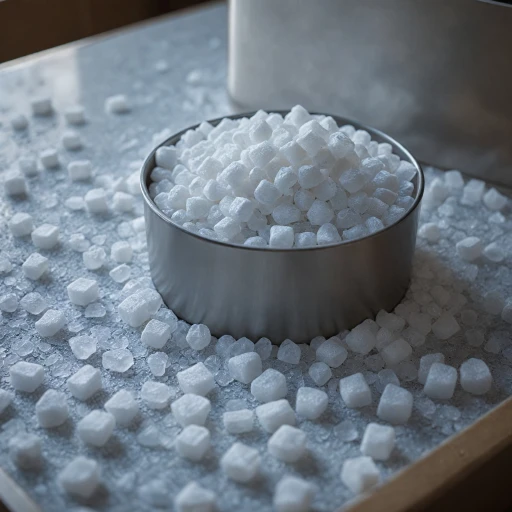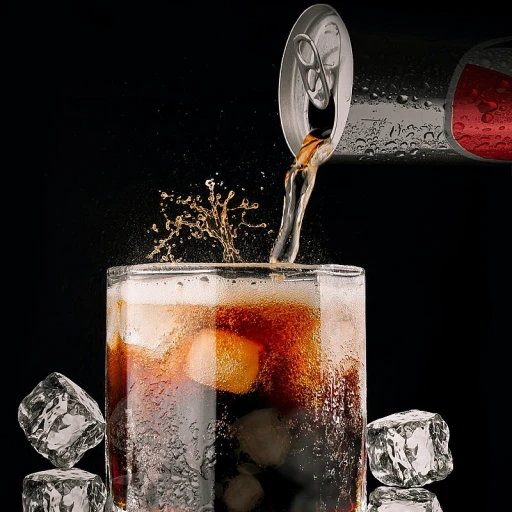Understanding Dry Ice Generators
Delving into the Mechanics of Dry Ice Generators
Dry ice generators are innovative machines designed specifically for producing dry ice, an incredibly versatile form of carbon dioxide in its solid state. This type of ice is widely used in various industries due to its unique cooling properties and sublimation process. Understanding how these machines work is essential for optimizing ice production and achieving the best results for your specific needs. Designed to produce quality dry ice, these generators often come as part of a larger system comprising equipment like the liquid CO2 storage tank and the pelletizer. The process begins with liquid CO2 being fed into the machine, where it’s converted into dry ice through a rapid drop in pressure. This transformation allows the production of dry ice blocks, pellets, or even fine ice pellets for different applications. The efficiency of dry ice generators can vary depending on the type and model. Known brands, such as ASCO, offer a range of products with features that cater to both low and high-volume production needs. Users seeking a portable dry ice maker should consider models that offer flexibility and reliability, particularly for applications involving ice blasting, cleaning, or special events like weddings. When considering investing in these production machines, it is crucial to understand the differences between machine types. For example, some equipment is designed for creating ice blocks that are ideal for long-lasting storage, while others may be more suitable for rapid production of pellets. By understanding these distinctions, users can select a maker machine that aligns perfectly with their ice making objectives and operational demands. For businesses aiming to enhance their operational efficiency or provide unique customer experiences, exploring the capabilities of a sonic ice maker might be a worthwhile consideration. This option provides an exceptional user experience, particularly in sectors where the quality of ice significantly impacts the overall service.Applications of Dry Ice Generators
Versatile Uses of Dry Ice Generators
Dry ice generators serve a wide range of applications across various industries, making them a versatile tool in ice production. One of the primary uses is in dry ice blasting, an effective cleaning method that utilizes compressed air to blast CO2 pellets onto surfaces. This is an environmentally friendly alternative to traditional cleaning methods, as it leaves no residue and reduces waste.
In the food and beverage industry, dry ice is crucial for preserving perishables during transportation, making it an indispensable equipment in logistics. For instance, production machines like the ASCO dry ice pelletizer can produce ice pellets for easy handling and distribution, ensuring foods remain fresh from the supplier to the retailer.
Another significant application is in the realm of event planning, such as weddings, where machines can create stunning effects on stage using machine dry ice. This adds a magical touch to the event, enhancing the overall guest experience.
The medical and healthcare sector also benefits significantly from dry ice machines. These machines help in the preservation and transportation of biological samples and vaccines by maintaining ultra-low temperatures. For instance, a portable dry ice maker can be used to produce ice blocks that are used in laboratories for everyday applications.
Moreover, choosing the right commercial ice maker and dispenser for your business can enhance efficiency and productivity significantly (learn more here).
Benefits Over Traditional Ice Makers
Advantages of Innovative Ice Production Technology
Dry ice generators offer a host of advantages over traditional ice makers, setting them apart significantly. A standout benefit is their ability to produce ice in forms that would be difficult to achieve using conventional methods. For example, they can generate ice pellets and blocks effortlessly, ensuring low-cost and efficient ice production suited for various industrial applications, including ice blasting and machine cleaning.
Additionally, dry ice machines provide a more sustainable option. Unlike regular ice makers that consume high amounts of water and electricity, these machines utilize liquid carbon dioxide, resulting in minimal power usage. This can lead to a reduction in operational costs, making them an appealing choice for businesses seeking cost-effective solutions.
Moreover, the portability aspect of some dry ice generators, such as portable dry ice makers, offers versatility in different environments ranging from weddings to large events. On-demand production means you can have ice ready whenever you need it, without waiting on extensive batches, enhancing efficiency during critical times.
For those interested in innovation in ice making, considering the right equipment can significantly influence your business operations, especially if your needs are diverse and dynamic.
Choosing the Right Dry Ice Generator
Factors to Consider When Selecting Your Generator
When deciding on the right dry ice generator for your needs, it's important to take multiple factors into account, ensuring the machine you opt for aligns with your specific requirements. Here's how you can make an informed decision:
- Purpose of Use: Determine whether you need the generator for domestic use, events like a wedding, industrial applications, or specific purposes such as ice blasting. Each use case may require different capacities and functionalities, such as an ice pelletizer for pellet production or a machine designed for ice production at a low cost per lbs.
- Size and Portability: Consider the available space and if you need a portable dry ice machine. For instance, a portable model may be convenient for smaller tasks or events, whereas a larger stationary machine could be suitable for continuous operation in industrial settings.
- Production Capacity: Evaluate your ice production needs. Some machines are designed to produce large ice blocks or asco dry ice pellets, while others might be more suited to smaller scale operations.
- Efficiency and Cost: Look into the energy efficiency of the generator. Efficient machines can lead to significant savings in operational costs while providing steady ice production. Consider the cost of maintenance, as well as any additional processes like regular cleaning and the efficiency of the overall production equipment.
- Specific Features: Some machines are equipped with integrated features such as ice block and ice pellet production capabilities, or specialized components for stage dry ice applications, impacting the overall utility of the machine.
- Manufacturer Reputation: Consider purchasing from reputable manufacturers known for quality and reliability. Research reviews about makers like Asco to ensure you are choosing a product with proven performance and customer satisfaction.
Choosing the right dry ice generator involves aligning your specific needs with the machine's capabilities and features. These considerations will help ensure you select the best equipment for your ice making ventures, whether for personal or professional use.
Maintenance and Safety Tips
Maintenance Practices for Your Dry Ice Generator
Proper maintenance of a dry ice generator is crucial for ongoing efficiency and safety. These maintenance tips will ensure the longevity of your machine and product quality:- Regular Cleaning: Cleaning is vital for any ice-making equipment. For dry ice machines, it entails removing residues, liquid build-up, and ensuring that blast nozzles are clear of obstructions.
- Monitoring Production Levels: Consistently check the ice production levels to ensure that the generator operates within the expected parameters. A sudden decrease could signal an issue with the ice maker mechanisms or the pelletizer.
- Inspecting Components: Regularly inspect all parts of the machine, especially the ice pelletizer. Look for wear and tear in components like hoses, connectors, and the blasting equipment.
- Safety Protocols: Always prioritize safety. Adhere to the manufacturer’s guidelines for operating the machine and handling dry ice pellets and blocks.
- Storage Conditions: Store the dry ice in low temperatures to prevent sublimation, extending the usability and quality of the ice blocks produced.
- Annual Checks: Schedule an annual professional maintenance check-up. Experts can address potential problems and ensure optimal performance of the asco dry and portable dry ice makers.
-logo-retina.jpg)













